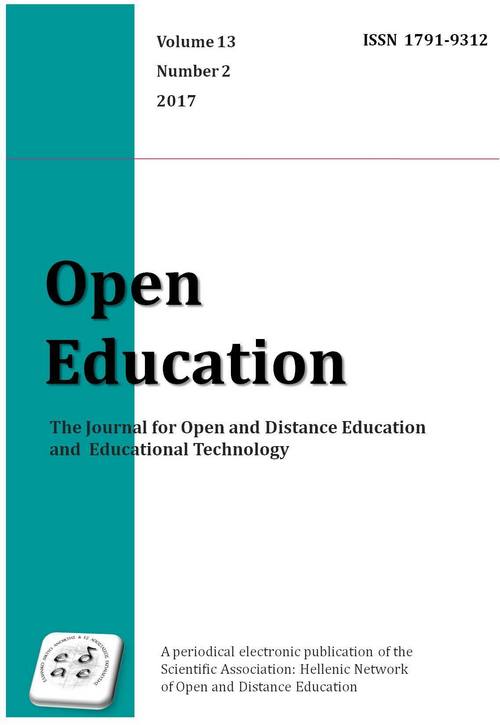Distance secondary education in Greece during the Covid-19 pandemic. An investigation of teachers' difficulties and implementation of Information and Communication Technologies in teaching.

Abstract
The present study investigates teachers’ difficulties and the implementation of Information and Communications Technology (ICT) during the coronavirus pandemic in Greece. The unprecedented conditions that teachers faced, was the main motivation for the present study, which aims to a further investigation of the educational situation during the pandemic, with main variables being the satisfaction from Distance Learning (DL), the perceptions in relation to DL and the difficulties that teachers faced with its implementation. The present study examines the key variables in relation to various demographic characteristics of its participants.
The population of this research was the teachers of public secondary schools of Greece. The data were collected through convenience and snowball sampling so as to increase the number of participants. A sufficient number of responses (276) was collected in a short period of time, which is an indication of the teachers' interest in the research topic. The questionnaire used was based on a similar survey conducted in a secondary school in Italy regarding the technological needs of teachers and students in the implementation of DL during the Covid-19 pandemic.
The software IBM SPSS Statistics version 26 was used, for the statistical analysis. For the reliability test, the internal consistency coefficient Cronbach's alpha was used with a requested index greater than 0.70. The statistical analysis showed that some research hypotheses were confirmed, while others were rejected. Specifically, there seems to be a negative relationship between satisfaction from DL and the difficulties it presents to teachers, but there is no negative relationship between perceptions of DL and the difficulties it presents. In addition, a positive relationship was found between teachers' perceptions of DL and their satisfaction. The results also showed that there were no gender differences in the satisfaction teachers receive from DL and in the perceptions they have about it, but there are gender differences in the difficulties presented by DL. No statistically significant differences of age, marital status, existence of children and years of work experience were found in relation to the satisfaction teachers receive from DL as well as in relation to the perceptions they have about DL. Furthermore, statistically significant differences were found in relation to the difficulties presented to teachers by DL depending on their place of residence. Furthermore, there are statistically significant differences in the satisfaction that teachers receive from DL and in the perceptions they have about DL, depending on the teachers’ level of studies. On the other hand, there are no statistically significant differences regarding the difficulties that teachers face with DL in relation to the teachers’ level of studies. Finally, it seems that there are statistically significant differences in the satisfaction that teachers received from DL depending on whether or not they had previous experience in implementation of DL.
Suggestions for future research include extending the present research in a wider academic context so that the results are more reliable, valid and amenable to generalization. This could be done through qualitative studies with interviews, quantitative studies with a larger number of participants, or a combination of quantitative and qualitative methodologies. Especially, after the recent appointments of a very large number of new school teachers in Greece, the population of the present research is expected to change significantly, with obvious effects on the demographic data that were a key element of this study.
Article Details
- How to Cite
-
Κούρτης Γ., Μαυροειδής Η., & Ιωακειμίδου Β. (2023). Distance secondary education in Greece during the Covid-19 pandemic. An investigation of teachers’ difficulties and implementation of Information and Communication Technologies in teaching. Open Education: The Journal for Open and Distance Education and Educational Technology, 19(1), 111–138. https://doi.org/10.12681/jode.32659
- Section
- Articles

This work is licensed under a Creative Commons Attribution-NonCommercial-ShareAlike 4.0 International License.
Copyright Notice
Authors who publish with this journal agree to the following terms:
Authors retain copyright and grant the journal right of first publication with the work simultaneously licensed under a Creative Commons Attribution Non-Commercial License that allows others to share the work with an acknowledgement of the work's authorship and initial publication in this journal.
Authors are able to enter into separate, additional contractual arrangements for the non-exclusive distribution of the journal's published version of the work (e.g. post it to an institutional repository or publish it in a book), with an acknowledgement of its initial publication in this journal.
Authors are permitted and encouraged to post their work online (preferably in institutional repositories or on their website) prior to and during the submission process, as it can lead to productive exchanges, as well as earlier and greater citation of published work.










